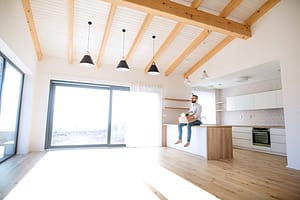It is hard to keep up with trends in both fashion, and interiors. Today there are so many influences, and fast changing trends that what is fashionable changes pretty quickly. However there are timeless styles, in both fashion and interiors. If we look back through the decades of the 20th century we can find plenty of inspiration. Today we will look at multiple trends across different decades, what designs and styles we can use as references.
The roaring 20’s
The roaring 20’s was one of the most fascinating periods for interior trends. It completely revolutionized our sense of style. Some of the trends from that time are still in vogue today. Art Deco was the main trend during the 1920’s. It completely changed both fashion and interiors. Lavish designs that look classy, and glamorous became the norm. Luxurious ceiling lights lighted every room.
Another great trend that was common during the Art Deco period was velvet. From chairs, to sofas, velvet became the main go-to material for a lot of items we have in our homes.
Art Deco was perhaps one of the biggest influences, spreading from fashion, to interior designs and to architecture. Although it began somewhere around the 1920’s, Art Deco would live on for 2 more decades. The style is in a sense timeless. Today the style is still widely used, and some of the items from that era are highly collectible.
The 50’s
During the 1950’s, a new style emerged. People were tired and bored from the Art Deco designs they were used to seeing for over 20 years. The 50’s brought futuristic design of furniture, and the use of different exotic colors to lighten up rooms, and spaces. The 50’s also marks the international expansion of Scandinavian home design. The Scandinavians are known for their beautiful, and outstanding interior design trends.
During the 50’s the Scandinavian style became widely known across the world. The use of pastel colors was also common in the 50’s. This home design trend marked a more creative period of interior design. With designers and architects from all over the world trying to combine futuristic designs, with colours and the well known Scandinavian style.
The 60’s
In a way the 1960’s interior design trends were similar to the 50’s. There are however slight differences. The cultural change at the time, brought more exotic and vivid colours into interiors. This combined with even more futuristic furniture designs, and exciting new architectural projects made it one of the most interesting periods in interior design history.
The 60’s also mark the beginning of the retro look so many of us like. In a way the 1960’s took the ideas from the 50’s, and made them increasingly more colourful and futuristic. It is interesting how the cultural change was happening not only in the streets, but also inside our own homes.
The 70’s
The 1970’s took some of the influences from the 1960’s and turned everything more funky. Although exotic colours were still used they were now combined with more mellow tones. Giving a more relaxed vibe to each room. The changes also included some different furniture designs from that era, and a lot of wallpaper.
The 1970’s also marked the wide use of futuristic designs especially in furniture. With round shapes, and base colours widely used at the time. Some of these furniture pieces can still be implemented in our interiors today.
Trends are a cultural representation
Time has greatly influenced designs, and our perceived notion of beauty. Through the years, interior trends change. A reflection not only of ourselves but the society we live in. To some extent interior designs, and fashion trends are a representation of the cultural changes in society. These changes affect the way people see trends, and designs. Today we have different trends, but most of them are inspired by older designs that are timeless, and iconic.
Who knows what trends will be landmarks in the future, it is impossible to tell. However, going forward we can see our older designs expand, and be combined to create new outstanding interior designs.






Leave a Comment